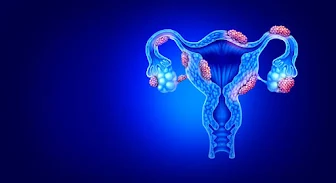What is Endometriosis? Symptoms, Causes, Diagnosis, Treatment
Endometriosis is a chronic, often painful medical condition where tissue similar to the lining inside the uterus, called the endometrium, begins to grow outside the uterus. This misplaced tissue can be found on the ovaries, fallopian tubes, the outer surface of the uterus, and other organs within the pelvis. In rare cases, it can also be found beyond the pelvic area.
Symptoms of Endometriosis
The most common symptoms of endometriosis include:
1. Pelvic Pain: This is the most common symptom, often associated with menstrual periods. Pain may be more intense than typical menstrual cramps and can worsen over time.
2. Menstrual Irregularities: Heavy periods (menorrhagia) or bleeding between periods (menometrorrhagia) may occur.
3. Pain During Intercourse: Pain during or after sex is common in those with endometriosis.
4. Pain with Bowel Movements or Urination: These symptoms tend to occur during menstruation.
5. Infertility: Endometriosis is sometimes first diagnosed in women seeking treatment for infertility.
6. Other Symptoms: Fatigue, diarrhea, constipation, bloating, and nausea, especially during menstrual periods.
Causes of Endometriosis
The exact cause of endometriosis is not fully understood, but several theories exist, including:
1. Retrograde Menstruation: This theory suggests that menstrual blood flows backward through the fallopian tubes into the pelvic cavity instead of leaving the body, allowing endometrial cells to implant and grow outside the uterus.
2. Embryonic Cell Transformation: Hormones such as estrogen may transform embryonic cells into endometrial-like cell implants during puberty.
3. Surgical Scars: After surgeries like a hysterectomy or C-section, endometrial cells may attach to the surgical incision.
4. Immune System Disorders: Problems with the immune system may make the body unable to recognize and destroy endometrial-like tissue growing outside the uterus.
5. Genetics: Endometriosis can run in families, so if a close relative has the condition, there may be an increased risk of developing it.
Diagnosis of Endometriosis
Diagnosing endometriosis typically involves the following steps:
1. Pelvic Exam: A doctor may feel for large cysts or scars behind the uterus.
2. Imaging Tests: Ultrasound, MRI, or CT scans may be used to detect cysts associated with endometriosis.
3. Laparoscopy: This is the most definitive way to diagnose endometriosis. A surgeon inserts a camera through a small incision near the navel to look for endometrial tissue outside the uterus. A biopsy can confirm the diagnosis.
Treatment of Endometriosis
Treatment for endometriosis often depends on the severity of the condition and whether the patient is trying to conceive. Common treatments include:
1. Pain Relief: Nonsteroidal anti-inflammatory drugs (NSAIDs) like ibuprofen can help reduce pain.
2. Hormonal Therapy: Birth control pills, patches, and vaginal rings can help reduce or eliminate pain by controlling hormone levels. Other hormonal treatments include GnRH agonists, progestin therapy, and aromatase inhibitors.
3. Surgical Options: In severe cases, surgery may be recommended to remove as much of the endometrial tissue as possible. In extreme cases, a hysterectomy (removal of the uterus) may be considered.
4. Fertility Treatment: If endometriosis is causing infertility, fertility treatments such as in vitro fertilization (IVF) may be recommended.
Conclusion
Endometriosis is a complex and often painful condition that can significantly impact a person's quality of life. While there is no cure, various treatment options can help manage symptoms and improve fertility. If you suspect you have endometriosis, it's important to consult with a healthcare provider for an accurate diagnosis and appropriate treatment plan.


